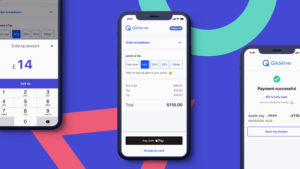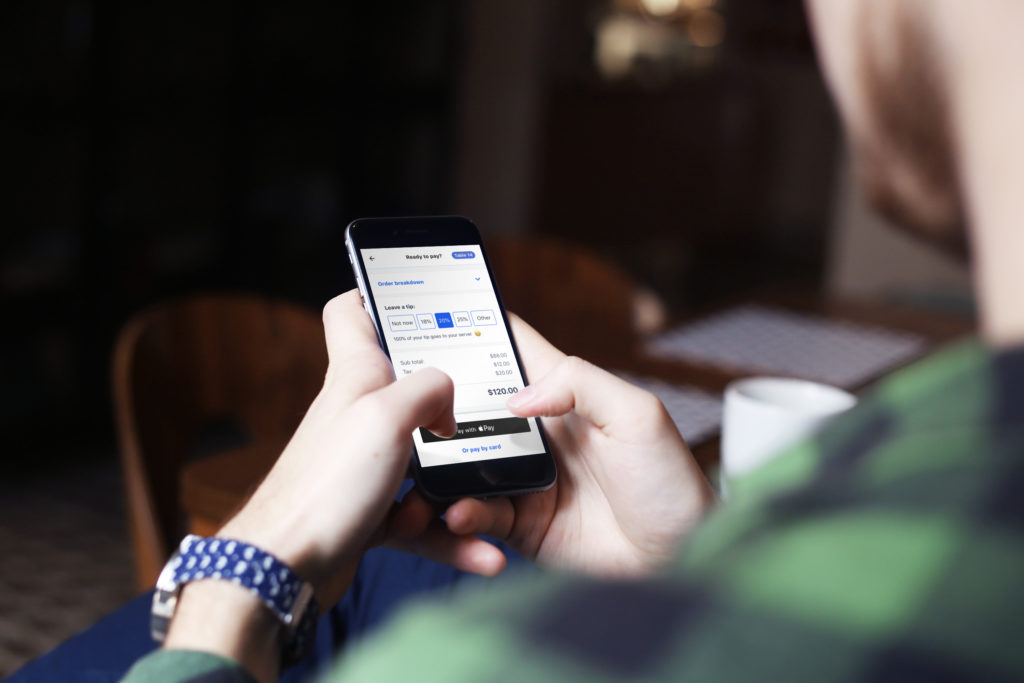As a guest, being able to use your mobile to pay your check the moment you’re ready to leave has the obvious benefit of being super convenient. In fact, QikServe the company was born out of an experience our Founder and President, Daniel Rodgers, had when he was eating out with his young family. He had just got settled at the table, on his own with two kids, when he realized he needed to leave them to go to the counter and order. It was then he thought this whole process of ordering and paying for food should really be available on his mobile. Quick. Easy. No need to leave kids unattended.
Before we dip into the 8 other benefits beyond that of convenience, it’s worth clarifying what we mean when we say mobile pay at table. In this case, it is when a guest has eaten and is ready to leave. They scan a QR code or tap an NFC tag on their table with their phone and are taken straight to a web page which shows their check. They’re able to review a breakdown of what they ordered, tip and pay using methods like Apple Pay, Google Pay or credit cards. They’re then free to leave when they want. So, here we go, 8 ways mobile pay at table can bring genuine value to you and your guests.

1) Take pressure off staff
Sometimes, when you’re ordering, it’s nice to have that face-to-face interaction with staff so they can explain a menu you might not be familiar with or tell you what specials or offers might be on. When it comes to paying though, aside from bringing the check, staff aren’t really needed from an engagement standpoint. Pay at table helps to remove this from staff’s shoulders, freeing them up to focus on more valuable activity. During peak times, staff are put to much better and more valuable use greeting guests and taking orders rather than wasting time bringing checks to the table and closing off tables on the point of sale (POS).
2) Make guests feel more comfortable tipping
Related to the above point, it turns out guests don’t really like it when staff are standing right next to them watching, waiting for them to input a tip amount into the PED device or leave cash in a wallet on the table. Pay at table lends itself well to US tipping culture because customers can choose a percentage or input the exact amount they want to leave in the privacy of their own mobile phone without staff standing by, piling on the pressure.
3) Reduce incidents of chargebacks
Chargebacks take up valuable resource from both the merchant and the bank. Pay at table can reduce chargeback incidents to almost zero as it’s hard to dispute that you didn’t make the payment through your phone when fingerprint ID is required when using methods like Apple Pay. Reduced chargebacks mean less time and money wasted processing these requests.
4) Save money
Pay at table is much cheaper than the investment brands must make to deck out all their restaurants with PED or other types of payment devices. The cost of hardware, installation, maintenance and upgrade of PEDs is a significant on-going cost. And, depending on the size of your stores, you’ll need more than one per restaurant. How often have you wanted to pay but found your waiter has to wait for a colleague to finish using the payment device first? With pay at table, there’s none of that, customers bring their own devices (BYOD).
5) Phased digital strategy
If you’re a brand that wants to take a measured, phased approach to your digital transformation, then pay at table is a great place to start to get your feet wet. It is quick and easy to implement and requires zero hardware investment. Once in, you can grow your offering at a pace that suits you, by adding on ordering, integrating with loyalty and so on.
6) Remove barriers to adoption
Unlike a native application, with pay at table, your guests don’t need to go through the inconvenience of downloading an app to their phone. And with 21% of people abandoning apps after one use, convincing guests to give you valuable real estate on their phone is a hard sell. The beauty of pay at table is that it removes this download barrier. All guests need to do is tap their phone on an NFC tag, scan a QR code or input a url into their mobile web browser. They can then access their check, tip, pay and leave in a matter of seconds.
7) Integrated for speed and accuracy
By opting for a pay at table solution that is fully integrated to your POS, your staff don’t need to close off a table after a guest has paid. With integrated solutions, your POS does this automatically meaning staff can quickly turn the table for the next guest and the right amount is input directly into POS. This is in stark contrast to cash handling where inaccuracies can occur, for example, if staff enter and pay in the wrong amount to the till.
8) Give guests more choice
We spoke about convenience at the beginning of this post and this point is related. Pay at table gives guests more choice. You’re able to offer them not only another channel for them to pay with but you give them greater flexibility in terms of actions like splitting their bill for example. Once they’ve retrieved their check, guests can choose to split bill with others in their party. This choice and flexibility makes the whole dining experience more convenient for guests meaning they’re more likely to return to enjoy it again.
So, pay at table might sound like a simple solution but it offers much more than just convenience. It can help your staff do their jobs more efficiently and effectively, it can make guests more comfortable when it comes to tipping and it can even encourage greater digital adoption by removing the download barrier many brands experience with native apps.
Want to learn more about pay at table? Check out our free eBook and walkthrough video below.





